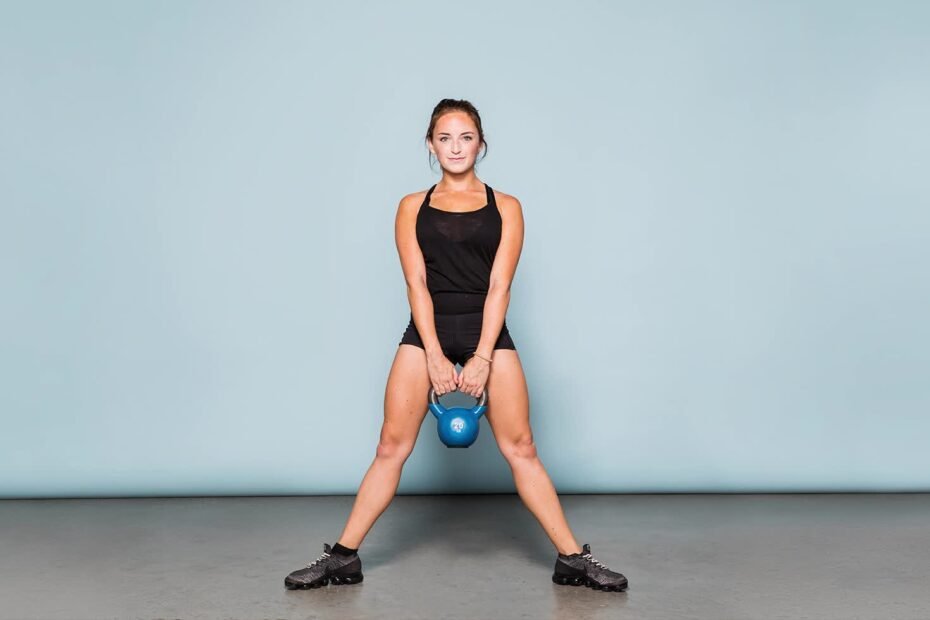The sumo squat, inspired by the wide stance of sumo wrestlers, is a dynamic lower body exercise that targets various muscle groups while promoting hip mobility and strength. This guide delves into the intricacies of the sumo squat, providing step-by-step instructions, insights into the muscles engaged, benefits, variations, alternatives, common mistakes, and essential considerations to help you master this effective movement.
Muscles Worked:
Primary Muscles:
- Quadriceps
- Adductors (Inner Thighs)
- Gluteus Maximus (Glutes)
Secondary Muscles:
- Hamstrings
- Calves
- Core Muscles (Abdominals)
How to Perform the Sumo Squat:
- Setup: Stand with your feet wider than shoulder-width apart, toes pointing outward at a comfortable angle.
- Position: Keep your chest up, shoulders back, and engage your core muscles.
- Descent: Initiate the squat by pushing your hips back and bending your knees.
- Depth: Lower yourself until your thighs are parallel to the ground or slightly below.
- Ascent: Push through your heels to extend your knees and return to the starting position.
- Repetition: Complete the desired reps while focusing on controlled movement.
Benefits of the Sumo Squat:
- Targeted Inner Thighs: The wider stance places emphasis on the adductors, helping tone and strengthen the inner thighs.
- Quadriceps Emphasis: Engages the quadriceps muscles due to the deep squat position.
- Hip Mobility: The sumo squat promotes hip mobility and flexibility.
- Functional Movement: Mimics movements used in activities like lifting and carrying heavy objects.
Variations:
1. Sumo Squat with Dumbbell:
- Hold a dumbbell or kettlebell with both hands at the center for added resistance.
2. Sumo Deadlift High Pull:
- Incorporate a jump and a pull into the movement, combining elements of the squat and deadlift.
Alternatives:
1. Wide-Stance Goblet Squat:
- Hold a dumbbell or kettlebell close to your chest while squatting with a wide stance.
2. Hack Squat:
- Perform a squat with the barbell behind your legs for a unique angle of resistance.
Common Mistakes to Avoid:
- Knees Over Toes: Prevent your knees from extending too far beyond your toes.
- Round Back: Maintain a neutral spine and avoid rounding your back during the movement.
- Leaning Forward: Keep an upright posture and avoid excessive forward lean.
Key Considerations:
- Foot Placement: Experiment with your foot angle to find the most comfortable and effective stance.
- Depth Control: Focus on achieving a full range of motion while maintaining proper form.
- Progression: Begin with bodyweight and gradually add resistance as your strength improves.
Conclusion:
The sumo squat brings a unique twist to traditional squat variations by targeting the inner thighs and enhancing hip mobility. By mastering its execution, understanding the muscles engaged, appreciating the benefits, exploring variations and alternatives, avoiding common mistakes, and considering key factors, you can integrate the sumo squat into your fitness routine with precision. Approach this exercise with dedication, proper form, and a commitment to enhancing your leg strength and hip mobility for optimal results.
